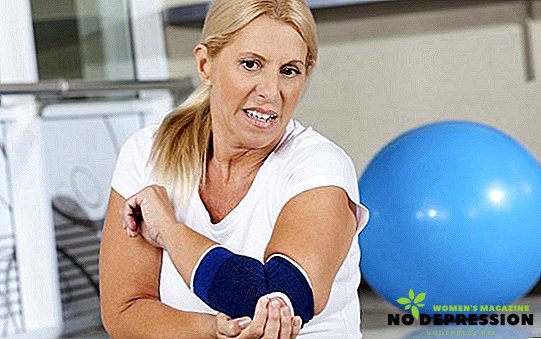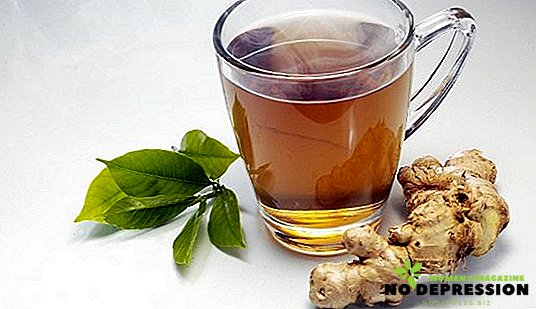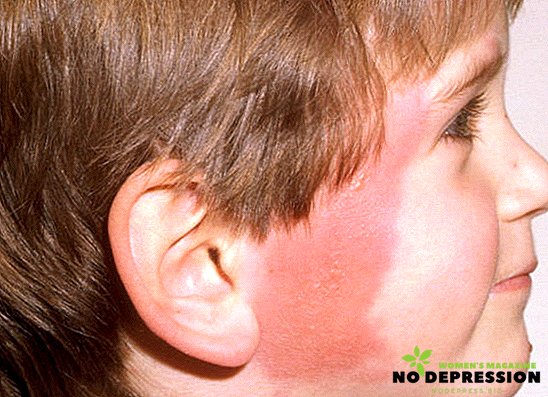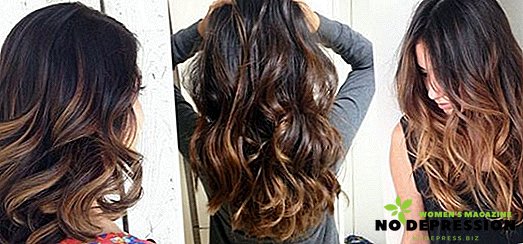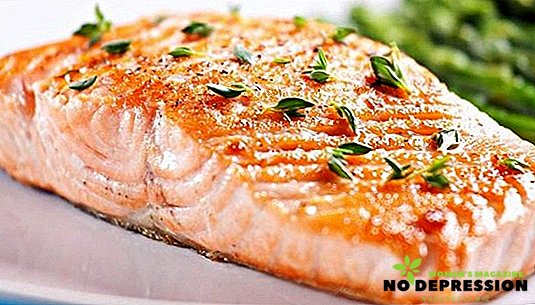Hyperhidrosis is called excessive sweating. The problem may be due to physiological features, pathological conditions or disruption of the nervous system. If the intensity of sweating suddenly increased, you must first find out the cause of this change, and only then proceed to treatment.
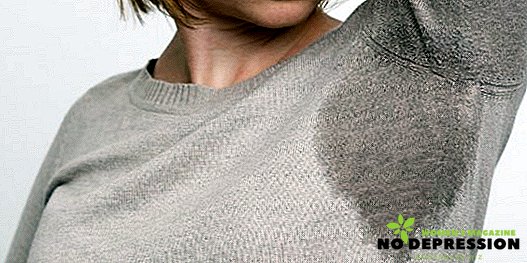
Why sweat different parts of the body in women?
First of all, it is important to find out the causes of excessive sweating in women. Hyperhidrosis is divided into primary and secondary.
Primary hyperhidrosis is caused by physiological features. As a rule, in such patients, there is an increased activity of the sweat glands from birth, or their number is increased.
This form of the disease is not treated with drugs and is not a pathology.
If excessive sweating interferes with the patient's normal life, a surgical operation is performed, during which a certain amount of sweat glands are removed.
Secondary hyperhidrosis develops on the background of any diseases and pathologies of internal organs. This form of the disease may appear for one of the following reasons:
- endocrine disorders;
- systemic metabolic diseases (including diabetes);
- liver and kidney disease;
- diseases of the nervous system;
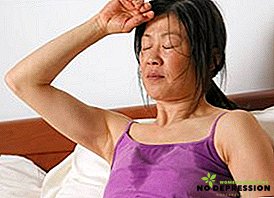
- intoxication of the body;
- infectious diseases;
- autonomic dysfunction.
Hyperhidrosis is local and generalized.
The generalized form of the disease is very rare and is caused by excessive work of the sweat glands in all parts of the body. Local hyperhidrosis is characterized by increased sweating of one part of the body.
Increased sweating of the legs due to the wearing of poor-quality shoes and socks. This form of the disease often accompanies fungal infections of the feet.
Plantar hyperhidrosis is complicated by calluses, skin irritation, discomfort when walking and an unpleasant smell. Plantar sweating rarely acts as an independent disease.
 Often in patients with hyperhidrosis, increased sweating of the palms is diagnosed. It can be caused by frequent stresses and skin contact with irritants.
Often in patients with hyperhidrosis, increased sweating of the palms is diagnosed. It can be caused by frequent stresses and skin contact with irritants.
This form of the disease causes patients serious psychological discomfort and imposes restrictions on social interactions. In women, a sudden increase in palm sweating can be triggered by the effects of household chemicals on the skin of the hands.
Girls and women encounter excessive sweating of the scalp during hormonal changes in the body. This form of hyperhidrosis is hormone-related and is diagnosed in adolescents, during pregnancy and at the onset of menopause.
Excessive sweating of the scalp can also be caused by exposure to shampoo and hair styling products. Hyperhidrosis of the scalp is often accompanied by dandruff, seborrheic dermatitis, and may appear against the background of excessive activity of the sebaceous glands, located in this area.
 Perspiration in women is caused by two factors - these are stressful situations and the use of cosmetics. Some skin care products create a moisture-retaining film on the face, resulting in increased perspiration, especially if this cosmetics is used in the hot season.
Perspiration in women is caused by two factors - these are stressful situations and the use of cosmetics. Some skin care products create a moisture-retaining film on the face, resulting in increased perspiration, especially if this cosmetics is used in the hot season.
In stressful situations, many people have reddened facial skin and increased sweating in the forehead. This condition is not a pathology and goes away with the elimination of a stressful situation.
Increased underarm sweating may be due to:
- antiperspirant exposure;
- skin irritation when wearing synthetic clothing;
- skin infection during depilation;
- stress;
- spicy food abuse.
Hyperhidrosis of the whole body is rare in women. Basically, this condition is of short duration and is caused by changes in hormonal levels. Sudden sweating can also occur when eating spicy foods.
Increased sweating during sleep
Night hyperhidrosis is a fairly common phenomenon. Women face this problem as a result of:
- hormonal disorders;
- stress;
- neurosis;
- sleep disorders;
- autonomic dysfunction.
 The work of the sweat glands is regulated by the vegetative nervous system. When violations of the work of this department there are a number of violations, including a violation of sweating. In this case, hyperhidrosis is a secondary symptom of autonomic dysfunction.
The work of the sweat glands is regulated by the vegetative nervous system. When violations of the work of this department there are a number of violations, including a violation of sweating. In this case, hyperhidrosis is a secondary symptom of autonomic dysfunction.
Disruption of the autonomic nervous system can also be caused by stress and neurosis, which leads to increased sweating at night when the body is resting.
Often, excessive sweating at night in women is caused by the action of external factors - climatic conditions, the quality of bed linen, and diet. So, in the hot season, night sweating is an absolutely normal fast-passing state.
If a woman constantly uses synthetic bedding, sweating at night can increase due to lack of oxygen coming to the skin.
Episodes of night sweats can occur after a hearty dinner, richly seasoned with hot spices - pepper, ginger, cinnamon. This condition is not a pathology, but an organism’s response to the use of food, which provokes a rise in temperature. Excessive perspiration in this case is necessary for cooling the skin and does not bear harm to health.
Hormonal background and hyperhidrosis
 Very often, women experience menstrual hyperhidrosis at the onset of menopause. This condition is caused by a decrease in the production of female sex hormones, with the result that episodes of excessive sweating occur.
Very often, women experience menstrual hyperhidrosis at the onset of menopause. This condition is caused by a decrease in the production of female sex hormones, with the result that episodes of excessive sweating occur.
During pregnancy, hyperhidrosis is caused by increased stress on the nervous system as a result of hormonal changes. After birth, sweating, as a rule, normalizes.
In the second phase of the menstrual cycle, an increase in testosterone concentration in the female body is noted. This may be accompanied by an increase in the intensity of sweat production. This state is not a pathology and passes from the first day of the new cycle.
Pathology diagnosis
Find out the cause of hyperhidrosis can only be a doctor. To make a diagnosis, you must visit a dermatologist. After examining the sweat glands, the doctor may refer you to a series of tests, and to other specialists, to rule out diseases of the internal organs.
Be sure to consult with an endocrinologist, as the pathology of the thyroid gland can provoke increased sweating. Women also need to check hormonal levels.
Since hyperhidrosis often appears on the background of chronic stress and neurosis, you should additionally consult with a neurologist. The activity of the sweat glands is regulated by the nervous system, so hyperhidrosis in most cases is the result of a malfunction of the body, and not an independent disease.
Treatment methods
 To effectively get rid of the problem, you must first find out the cause of hyperhidrosis.
To effectively get rid of the problem, you must first find out the cause of hyperhidrosis.
With chronic stress, insomnia and neurosis, the treatment prescribed by a neurologist. Herbal sedatives and daily tranquilizers are commonly used.
Normalization of the nervous system allows you to get rid of hyperhidrosis without direct treatment of this symptom.
For idiopathic or primary hyperhidrosis, treatment includes:
- medical drugs;
- physiotherapy;
- use of special antiperspirants.
Drugs for excessive sweating - it is an ointment with a drying effect, for example, Teymurov paste. The drug is applied to cleansed skin twice a day.
The tool has no contraindications and can be applied to any part of the body. The disadvantage of the drug is its consistency, which is why the paste can leave marks on clothes.

The use of special antiperspirants that inhibit the activity of sweat glands is considered an effective treatment. Such drugs are sold only in a pharmacy, the doctor must select the drug.
The treatment scheme is very simple: during the month the drug is applied to the area with increased sweating at bedtime. As a rule, the course of treatment is sufficient to normalize perspiration for up to six months, and then the course is repeated.
Physiotherapy methods show good results in the treatment of hyperhidrosis. Doctors often recommend darsonvalization. The advantages of this method are in its simplicity and affordable cost of the device, so that treatment can be carried out independently at home.

The device Darsonval provides microcurrent effects, improves local metabolic processes and reduces the activity of the sebaceous and sweat glands. This physiotherapeutic method is often used to treat the problem of hair loss and acne on the face.
The procedure is very simple - you need to turn on the device and within 7-10 minutes to drive a special nozzle on the problem area. The course of treatment consists of 10 procedures. If necessary, the therapeutic course can be repeated after 3 months.
How to get rid of excessive sweating in women: folk recipes
Treatment of folk remedies is carried out using decoctions. There are two therapeutic methods - it is the normalization of the work of the nervous system through decoctions (effective if hyperhidrosis is caused by stress), and the use of compresses to normalize the work of the sweat glands.
For internal use decoctions are used with a sedative effect. You can prepare them according to one of the following recipes.
- Two large spoons of dried lemon balm pour 500 ml of boiling water and leave to cool. Broth take a quarter glass three times a day for two weeks.
- 30 g of dried valerian root pour two cups of water and boil on low heat for 15 minutes. Then the medicine is filtered and cooled. Take half or a glass of tea daily before bedtime.
- Mix in equal proportions mint, sage, chamomile and lemon balm. Two tablespoons of the mixture pour two cups of boiling water, leave for three hours and then strain. Infusion take before bedtime for half a glass. The treatment lasts 15 days.
For the treatment of areas with excessive sweating, the most effective remedy is oak bark. You can purchase dried bark at the pharmacy, or you can collect it yourself in the forest. When sweating bark can be used as a compress or powder.
To prepare the broth, two tablespoons of bark should be boiled in 500 ml of water for 15 minutes. When the tool cools down, it is moistened with a gauze compress and applied to the area with excessive sweating for half an hour.

Processing is carried out in the morning and in the evening. In the generalized form of hyperhidrosis, when the whole body is sweating profusely, a bath with decoction is recommended. To prepare the decoction in this case, 100 g of bark should be poured with a liter of boiling water and left for two hours.
Then the product is poured into a bath filled with water at a comfortable temperature. Take such baths should be every day for 40 minutes during the month.
Powder from oak bark helps to reduce sweating. To prepare it is very simple, for this you need to grind 100 g of plants in a blender. Powder well helps with sweating feet and palms.
For the treatment of the palmar and plantar form of hyperhidrosis, it is necessary to pour 3-4 tablespoons of the product into socks or gloves, which are worn overnight.
Surgical treatments
Since excessive sweating in most cases is associated with the activity of the sympathetic division of the autonomic nervous system, surgical treatment is aimed at normalizing the activity of the sweat glands.
 This is achieved through sympathectomy, a procedure in which certain nerve fibers of the sweat glands are pinched. After the intervention, some sweat glands stop receiving signals from the nervous system about the need to produce sweat, and sweating is significantly reduced.
This is achieved through sympathectomy, a procedure in which certain nerve fibers of the sweat glands are pinched. After the intervention, some sweat glands stop receiving signals from the nervous system about the need to produce sweat, and sweating is significantly reduced.
Another option for surgical treatment is scraping a number of sweat glands. It is advisable to remove the glands in case of excessive sweating of the armpits. The operation is performed under local anesthesia, the patient remains conscious.
A less radical solution to the problem is Botox injections. Injections are made directly into the sweat glands, as a result of which the connection between the gland and the nerve fibers is blocked, and the sweating is reduced. Injections have their "shelf life".
One procedure is enough to get rid of hyperhidrosis for about 5-7 months, and then the procedure will have to be repeated, since the effect of the substance stops.
Expert advice
 Faced with excessive sweating, you must first change your habits and follow the reaction of sweat glands. Often, increased perspiration is caused by external factors that go unnoticed - these are climatic conditions, skin irritation, the wearing of synthetic clothing and the use of poor-quality bed linen.
Faced with excessive sweating, you must first change your habits and follow the reaction of sweat glands. Often, increased perspiration is caused by external factors that go unnoticed - these are climatic conditions, skin irritation, the wearing of synthetic clothing and the use of poor-quality bed linen.
Spicy food lovers often experience increased perspiration. In this case, it is enough to revise the diet to normalize sweating.
Sudden sweating in women may be associated with internal pathologies. For the diagnosis it is necessary to undergo a comprehensive examination of the body. Treatment of the underlying disease will eliminate sweating without the use of therapeutic antiperspirants and ointments.
Some more useful information on the topic of the article is in the next video.



